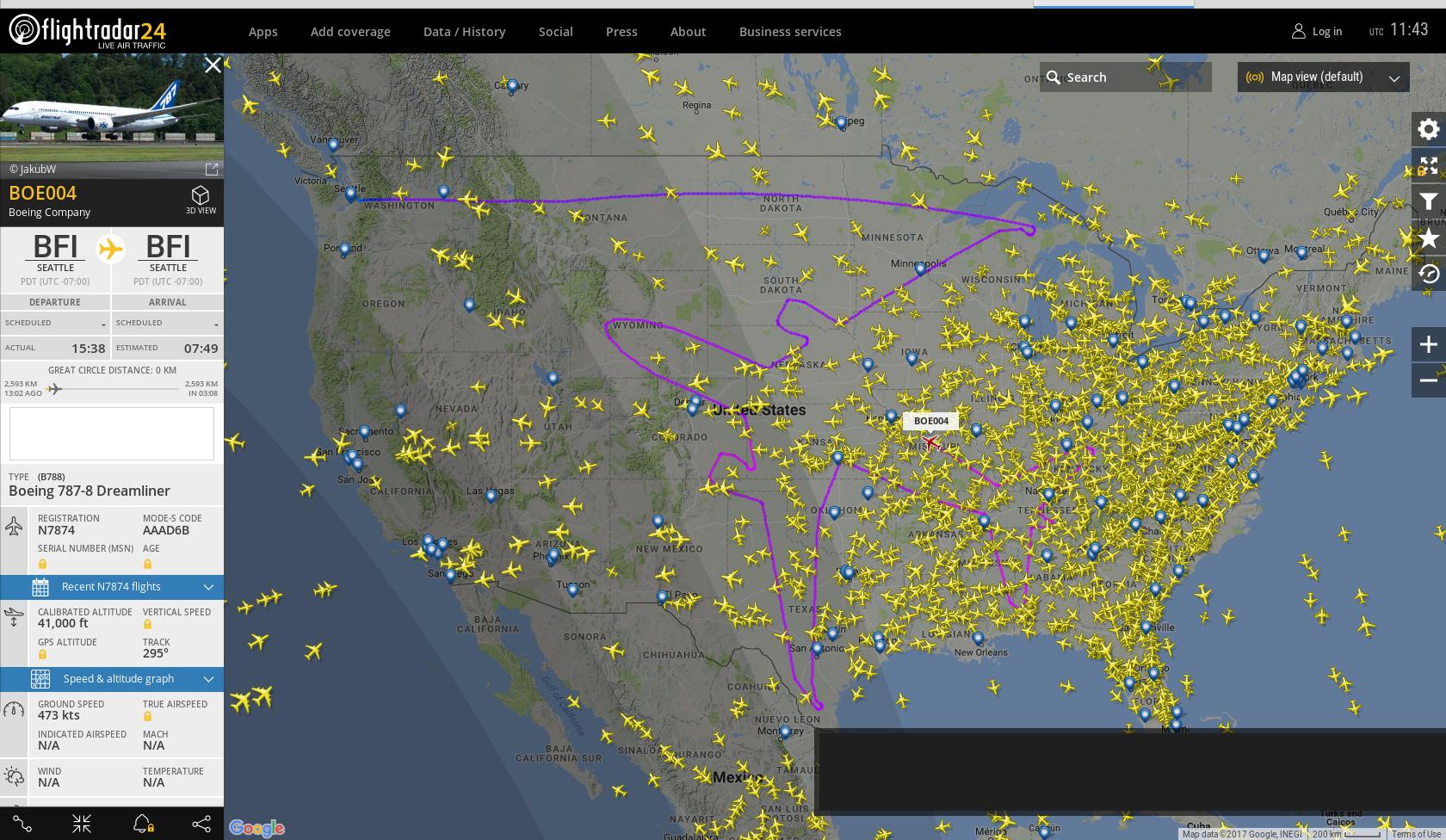I assume they have to enter a flightplan for this or do say just say "it's a test, please clear airspace for us around the complete US"?

Still flying and completing the right wing.
I would appreciate it with a 747-8, harder to draw :)
I assume they have to enter a flightplan for this or do say just say "it's a test, please clear airspace for us around the complete US"?

Still flying and completing the right wing.
I would appreciate it with a 747-8, harder to draw :)
Rules for ATC in the US are laid out in FAA JO 7110.65.
The primary purpose of the ATC system is to prevent a collision between aircraft operating in the system and to provide a safe, orderly and expeditious flow of traffic, and to provide support for National Security and Homeland Defense.
It's up to ATC to use their best judgment as to how to accommodate the requests of the pilots while keeping the system safe and expedient for everyone. Pilot requests can always be denied, but of course the pilot has the ultimate responsibility for the safety of their flight.
Since ATC is specifically required to support National Security, the military already has reserved areas charted, called military operations areas, or MOAs, and Restricted Areas. The military has priority in a MOA, and when Restricted Areas are in use non-military aircraft need special permission to fly there.
For civilian flights, they are less likely to get a completely reserved area. ATC needs to know where the aircraft will be so they can keep them separated from other traffic. If pilots want a block of airspace for testing, where they can turn, climb, and descend without asking permission every time, they typically need to find some airspace where they can stay out of the way of other aircraft. Companies like Boeing may have agreements with ATC about certain areas that are available for this kind of usage, often out over the ocean
For special tests like the one in the question, the pilots have to plan out their route. The filed route uses GPS waypoints to complete the pattern:
KBFI SEA NORMY J70 MLP GTF 4632N/08706W 4626N/08908W 4301N/09715W 4352N/09907W 4358N/09958W 4306N/10033W 4245N/09958W 4229N/09834W 4122N/10101W 4254N/10552W 4312N/10730W 4314N/10848W 4302N/10919W 4235N/10907W 4157N/10820W 4112N/10654W 3932N/10210W 3717N/10133W 3757N/10243W 3803N/10323W 3702N/10401W 3633N/10320W 3604N/10117W 2827N/09937W 2652N/09820W 2814N/09844W 3438N/09829W 3538N/09819W 3745N/09715W 3610N/09249W 3533N/08953W 3148N/08837W 3126N/08754W 3503N/08731W 3457N/08616W 3539N/08713W 3809N/08411W 3820N/08458W 3642N/08915W 3804N/09148W 3935N/09604W 4143N/09442W 4230N/09354W 4601N/08829W 4631N/08706W KBFI
The pilots must stay on their cleared routing and ATC will do their best to accommodate them. Of course if safety becomes a concern ATC may have to deviate them from their pattern. But knowing the flight path ahead of time, ATC should be able to have other flights in the area out of the way without much trouble.
This flight in particular was done overnight, when air traffic is lightest, which would have made separation much easier. Also, a lot of the path is in the western US, which also has less air traffic. Towards the end of the flight, once more fuel was burned off, the flight climbed to FL400 and higher which would have taken it above most other traffic. All of these factors would make ATC more likely to accommodate this sort of strange routing.
There are many other examples of this sort of thing:
Developing remote sensing devices, there have been many times that I have had to fly specific routes at specific speeds. Normally I pre-coordinate with each ATC facility and nearby towers. A cover letter, a route plan, and any additional data covering the specifics of the test are included. If the customer is a governmental agency, I will often mention that. The day before, someone calls a supervisor at each facility to remind them. The same day, usually, but not always, a call is made prior to the flight.
There are some procedures in controller handbook (US) but the point is that clear communication has always gotten priority handling, except when we conflicted with Air Force One. We will always offer to yield to lifeguard flights (and have to anyway). After doing this type of flying for 35 years, I cannot think of one time that what was requested didn't get granted. That includes controllers stopping arrivals and departures at DCA for 5 minutes on one test.
Some of the flights were National Security flights, but most were not, and reasonable and well communicated requests have consistently received excellent support from ATC.